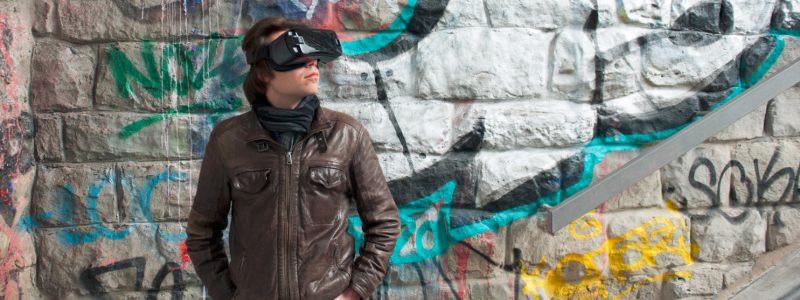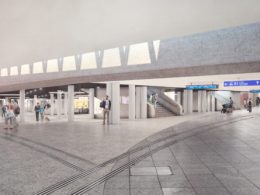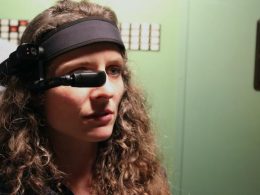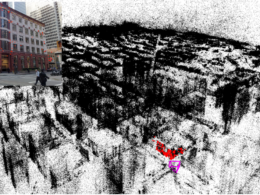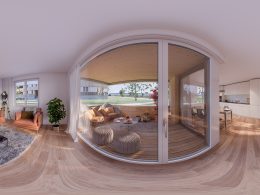Underkath video coach Silvan Maximilian Hohl has made an apocalyptic VR short film, as we have already reported. reported. Even if the technology was a sticking point, it wasn't the biggest concern.
The 360-degree all-round view of a VR camera has its pitfalls: As a director, you can't simply position yourself behind the cameraman during filming. Where do you place the spotlights without them being visible in the film? And how do you record the sound so that the noises and voices sound spatially orientated?
Underkath video coach Silvan Maximilian Hohl had to find answers to such questions during the filming of the VR film "2100".
Show that it is possible
"We had to start from scratch and build up all the expertise first," says Hohl, director and scriptwriter of the film project, in a statement on Kath.ch. As part of a 40 per cent job, he manages the YouTube channel Underkath, a digital youth meeting place that aims to make church youth work more visible, among other things, and is run by the Catholic Media Centre.
The 25-year-old explains that the idea came about during a conversation during a break. "We wanted to use the project to show that it is possible to make your own VR film."
As if you were standing in the bunker yourself
The film title says it all: The year is 2100 and a climate catastrophe has plunged humanity into misery. Three young people seek shelter in the bunker. And discuss - or rather: soon argue - how they can improve their situation: through faith in God or through science?
In Underkath's VR film, which lasts around four minutes, the viewer finds themselves in the middle of a bunker. You can see someone sitting on the floor in an alcove. Opposite them, the door opens. When someone pulls out a gun in the course of an argument, the viewer looks directly into the barrel.
Hohl sees this production, which is about ethics, faith and creation, as a starting point for discussions with young people about a topic that is likely to preoccupy them in times of climate strikes. The film can be used in religious education lessons.
Unrealistic?
In future, Underkath wants to realise further productions for parishes on request. Based on the experience gained, however, Hohl believes it is rather unrealistic that young teams from parishes could use VR technology to make their own film under supervision, as Underkath envisages in the area of conventional videos.
The challenges are numerous, as Hohl learnt during the pilot production. For example, the special camera with two 180-degree lenses produces a lot of data that is challenging to process, such as for colour grading or sound.
Suitable film location finally found
However, technology was not the biggest challenge for Hohl's own pilot project, for which he cast young professional actors. For example, a special 3D microphone proved to be the right solution when it came to finding the right spatial sound.
However, he started to sweat when it came to finding a suitable film location. Hohl looked at several air raid shelters in the Zurich area - but they all turned out to be too tidy, too "clean". "That was the stressful part of the project," says Hohl, who gradually came under pressure to meet a deadline. When he finally told a colleague about his project, he suggested filming in his parents' house. The wine cellar in Wädenswil ZH, which had been converted into a bunker in the 1940s, proved to be the ideal location for the project.
"There were also enough angles to place spotlights without them being visible in the film." And there was also a corner for the director behind which he could guide the actors - invisible to the camera
Source: Kath





